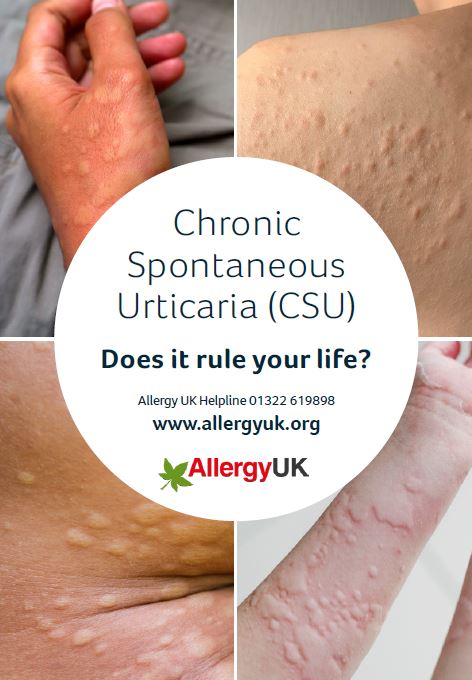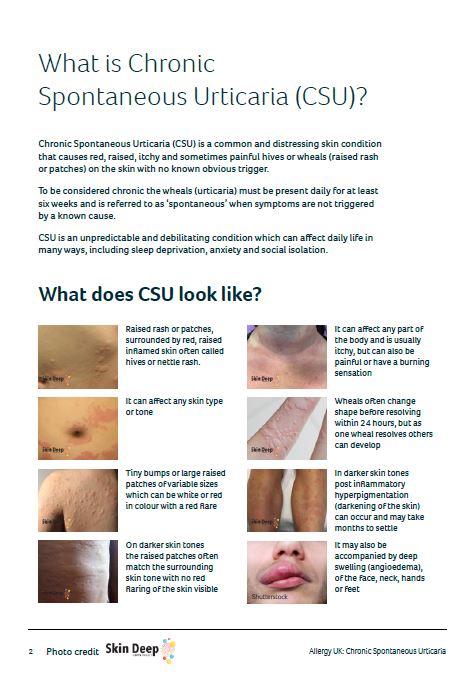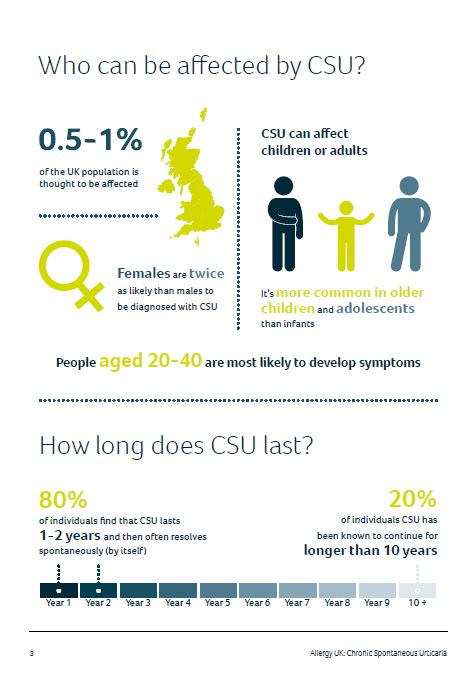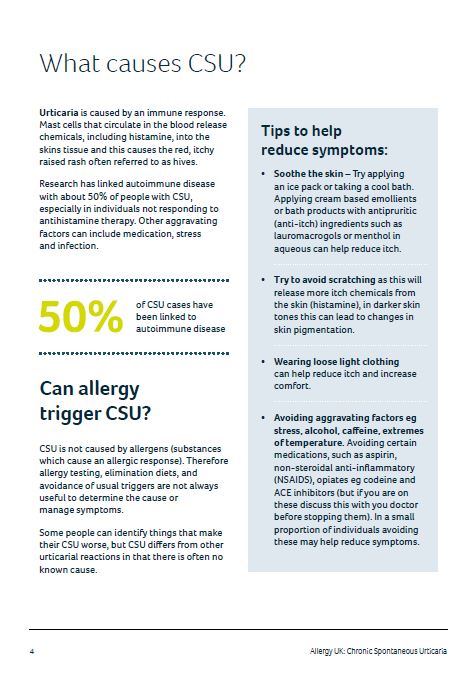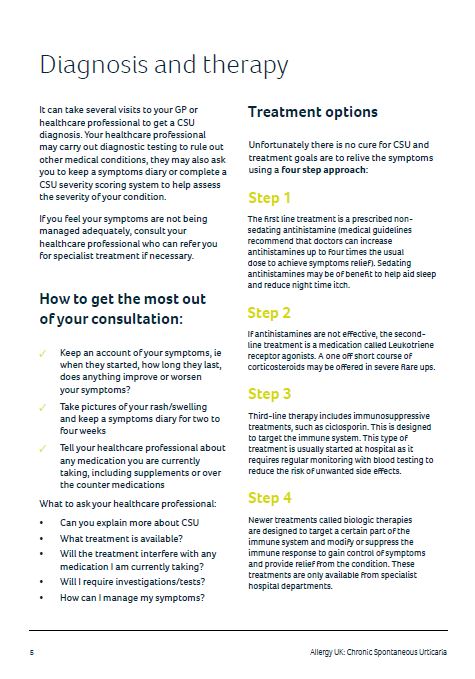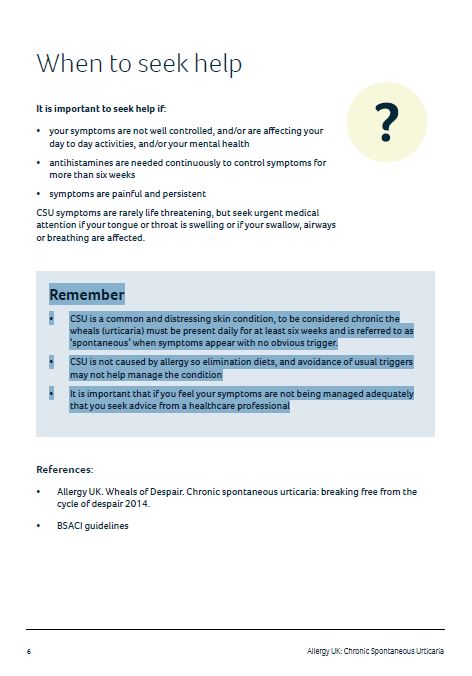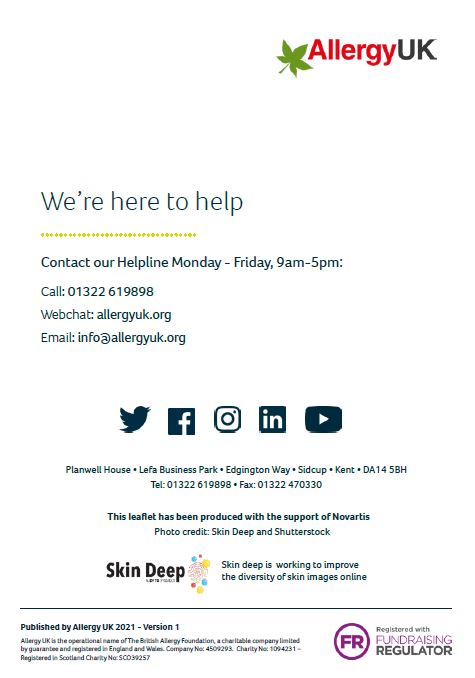What does CSU look like?
- Raised rash or patches, surrounded by red, raised inflamed skin often called hives or nettle rash
- It can affect any skin type or tone
- Tiny bumps or large raised patches of variable sizes which can be white or red in colour with a red flare
- On darker skin tones the raised patches often match the surrounding skin tone with no red flaring of the skin visible
- It can affect any part of the body and is usually itchy, but can also be painful or have a burning sensation
- Wheals often change shape before resolving within 24 hours, but as one wheal resolves others can develop
- In darker skin tones post inflammatory hyperpigmentation (darkening of the skin) can occur and may take months to settle
- It may also be accompanied by deep swelling (angioedema), of the face, neck, hands or feet
Who can be affected by CSU?
- 0.5-1% of the UK population is thought to be affected
- CSU can affect children or adults
- Females are twice as likely than males to be diagnosed with CSU
- It is more common in older children and adolescents than in infants
- People aged 20-40 are most likely to develop symptoms
What causes CSU?
Urticaria is caused by an immune response. Mast cells that circulate in the blood release chemicals, including histamine, into the skins tissue and this causes the red, itchy raised rash often referred to as hives. Research has linked autoimmune disease with about 50% of people with CSU, especially in individuals not responding to antihistamine therapy. Other aggravating factors can include medication, stress and infection.
50% of CSU cases have been linked to autoimmune disease
Can allergy trigger CSU?
CSU is not caused by allergens (substances which cause an allergic response). Therefore allergy testing, elimination diets, and avoidance of usual triggers are not always useful to determine the cause or manage symptoms. Some people can identify things that make their CSU worse, but CSU differs from other urticarial reactions in that there is often no known cause.
Tips to help reduce symptoms:
- Soothe the skin – Try applying an ice pack or taking a cool bath. Applying cream based emollients or bath products with antipruritic (anti-itch) ingredients such as lauromacrogols or menthol in aqueous can help reduce itch.
- Try to avoid scratching as this will release more itch chemicals from the skin (histamine), in darker skin tones this can lead to changes in skin pigmentation.
- Wearing loose light clothing can help reduce itch and increase comfort.
- Avoiding aggravating factors eg stress, alcohol, caffeine, extremes of temperature. Avoiding certain medications, such as aspirin, non-steroidal anti-inflammatory (NSAIDS), opiates eg codeine and ACE inhibitors (but if you are on these discuss this with you doctor before stopping them). In a small proportion of individuals avoiding these may help reduce symptoms.
Diagnosis and therapy
It can take several visits to your GP or healthcare professional to get a CSU diagnosis. Your healthcare professional may carry out diagnostic testing to rule out other medical conditions, they may also ask you to keep a symptoms diary or complete a CSU severity scoring system to help assess the severity of your condition.
If you feel your symptoms are not being managed adequately, consult your healthcare professional who can refer you for specialist treatment if necessary.

 Helpline
Helpline